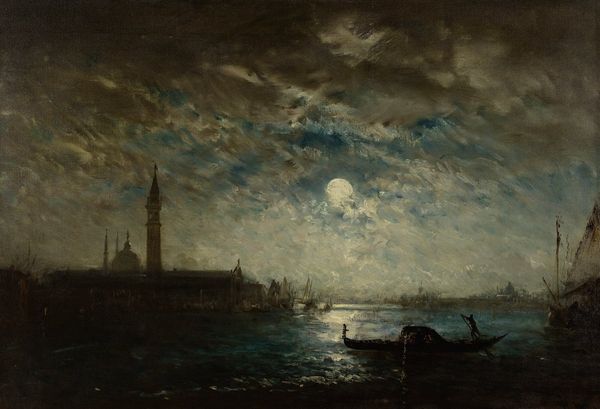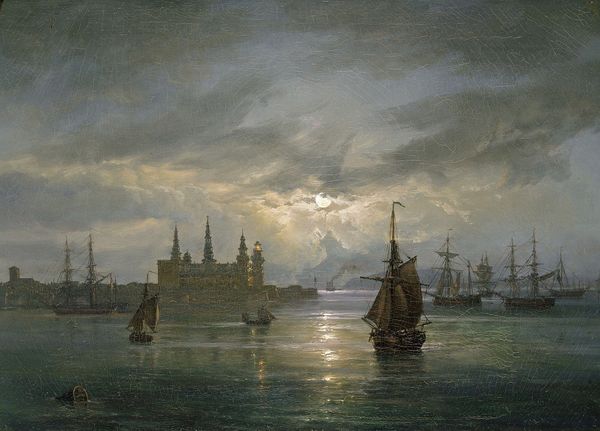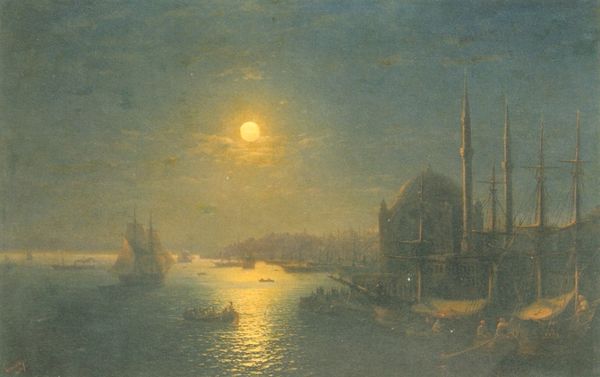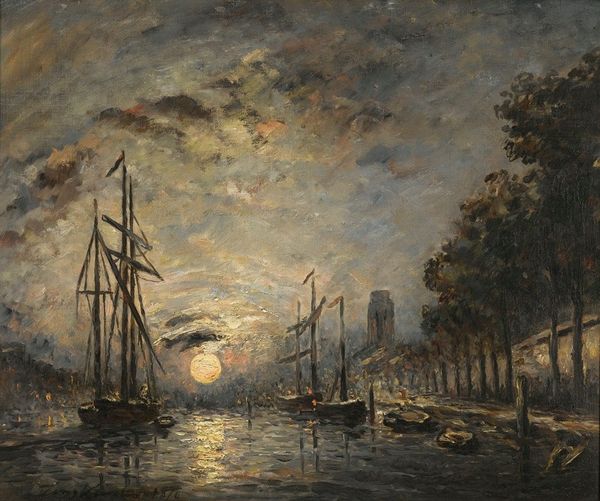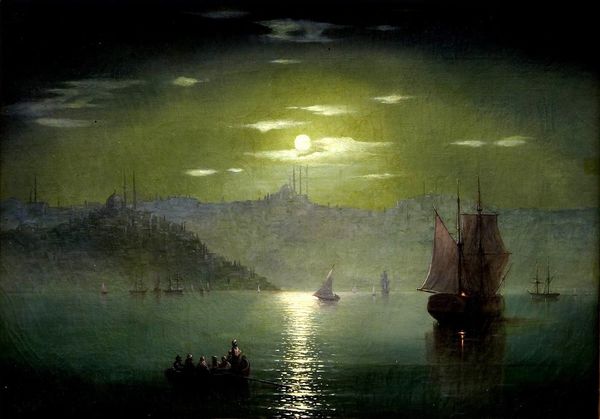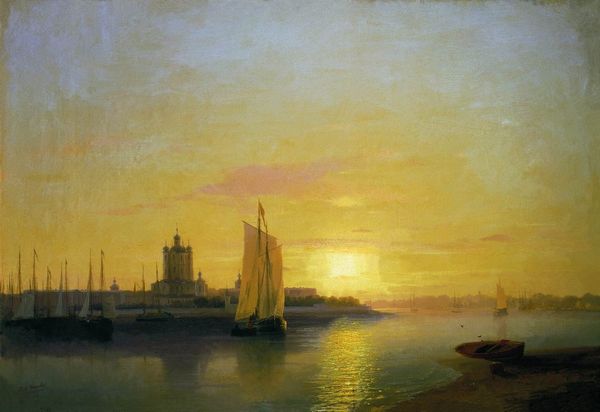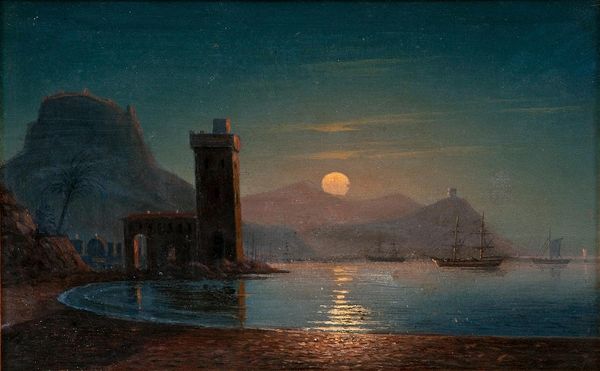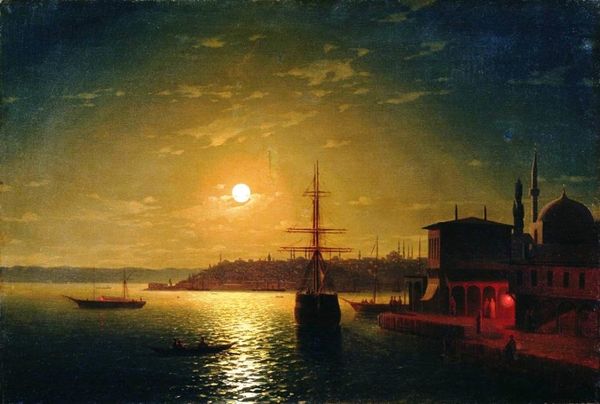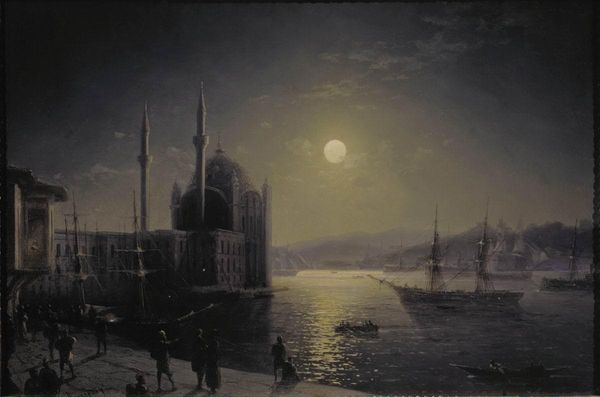
A View of the Bosporus with the Hagia Sophia and the Maiden’s Tower in the Moonlight 1884
0:00
0:00
Copyright: Public Domain: Artvee
Curator: Looking at Ivan Aivazovsky's "A View of the Bosporus with the Hagia Sophia and the Maiden’s Tower in the Moonlight," painted in 1884, I am struck by how the materiality contributes to the overall mood of nocturnal serenity. The way the artist manipulates the oil paint creates a soft, almost dreamlike texture. Editor: There's something unsettling about this "serenity," though. This painting feels like a carefully constructed Orientalist fantasy, bathed in moonlight to mask the complexities and inequalities inherent in the socio-political landscape of the Ottoman Empire during this period. Curator: Absolutely, but let’s think about Aivazovsky's meticulous handling of his medium here. The thinly applied layers of oil-paint in the sky and the reflections in the water create an illusion of depth and luminosity, a feat of technique that’s impossible to ignore. It's this attention to the technical process that elevates the work beyond a mere depiction. Editor: I concede to his craft. Yet, this precise skill contributes to constructing an exotic, almost theatrical, vision. It’s worth examining how the Western gaze informed his composition, reducing a rich cultural hub to a picturesque tableau viewed, essentially, from the shore. This vantage erases the experience and voices of the people living there. The focus shifts to a kind of passive consumption of "exotic" difference. Curator: His choice to focus on these recognizable landmarks like the Hagia Sophia and the Maiden's Tower is quite telling, though. They are markers not just of place but of labor, representing significant construction projects shaped by human hands and engineering feats across history. It connects the viewer directly to the productive aspects that define civilizations. Editor: However, that "connection" often bypasses genuine engagement. Focusing on these architectural marvels, without including details about the cultural diversity, internal struggles, and daily life, risks a simplistic understanding. This image subtly reinforces a romantic narrative while obscuring more urgent political realities faced by people during this period of growing social and political unease. Curator: Perhaps the real strength lies in the tensions we’ve identified. He's made an artwork from pigment and light to create this compelling, contradictory space, forcing us to consider these very complex interactions. Editor: Exactly. Through interrogating Aivazovsky’s artistic choices, we are called to recognize the crucial interplay between artistic vision and historical narrative. This moves us beyond accepting a pretty picture and towards a more conscious examination of how visual representations shape our understanding of the world.
Comments
No comments
Be the first to comment and join the conversation on the ultimate creative platform.

